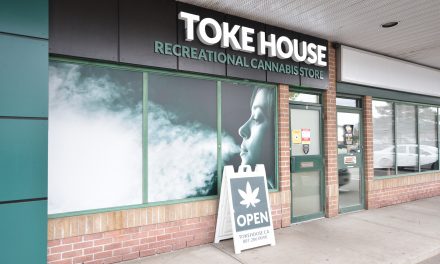By Justin Allec
With the amendments to the federal Cannabis Act allowing for the sale and consumption of cannabis-derived products like extracts, topicals, and edibles, we’re entering a new phase of public engagement. Edibles, which refer to cannabis-infused food products, may be the most interesting new category as the range of products is only limited by people’s imagination. Baked goods (such as the good ol’ brownie) and candies seem to be the most common products out there, but a cannabis-infused tincture can be added to literally any kind of food for a kick. Of course, all this is happening while the Ontario Cannabis Store (OCS) doesn’t even have plans to sell edibles for a few more months, which means that any products you’re likely to try will be home-made or imported.
The big draw of edibles for many people is that it eliminates ingesting cannabis vapour, which means a “healthier” method of consumption. The caveat is that as you change the way you ingest cannabis, it changes its influence on your body. In general, it takes longer for an edible to take effect, but the effects will be felt much longer and, potentially, much more intensely. To start, the edible needs to be digested. As cannabis binds easiest to fat molecules, the edible needs to be pushed into your lower intestine through peristalsis, where it can mix with digestive juices from your stomach and other organs to be absorbed into the bloodstream. How long this takes depends on the edible itself and what else you’ve eaten. Once the cannabis has been absorbed, it can last for up to six hours, though experts advise that it may be up to 24 hours before residual effects pass. For that reason, start small, especially if you’re new to cannabis. Check—and then check again, per portion if necessary—that you aren’t taking more than 2.5 mg of THC at a time. You can always take more if you want to.
With the increased interest is scrutiny, and edibles, for the confounding reason of resembling regular food, have been drawn into a narrative of concern. Ivan Ho, a public health nutritionist with the Thunder Bay District Health Unit, recently published a great article called “Food for Thought—Eager for Edibles?” on the TBDHU blog that addresses many of those concerns. Ho discusses food security, a lack of long-term research, and potential problems with labeling and marketing to youths as the areas he’s most concerned with. The latter seems to be tumultuous, as evidenced by the spat of outrage articles around Halloween discussing edibles being handed out as literal candy. That’s the challenge for the cannabis industry. Edibles need to be packaged for retail, and even though the Cannabis Act stipulates that packaging needs to be as neutral as possible, brands will still try to make their products attractive to distinguish themselves from the competition. While Ontarians may have to wait to purchase edibles directly from the OCS, their new legal status means that we can start discussing these issues nationally.
Everything Was Fine Until It Wasn’t
Uh-oh; you (or a friend) ate too much. Now what?
Prepare your space: Because edibles are long-lasting, hopefully you’ve planned to use them while in a comfortable, safe space with no real responsibilities.
Don’t freak out: There have been zero deaths attributed to cannabis, so you aren’t going to die. Work on being calm. Dim the lights, put on quiet music, breathe deeply, stay offline.
Distract yourself: Since cannabis accentuates sensations, avoid unpleasant ones. Watch something funny. Do some colouring. Have a shower. Talk to a friend, but only if they’re being supportive. Go for a walk.
Dilution: Hydrate and eat—introducing food and water into your digestive system pushes the THC through faster. Some people recommend eating peppercorns, as black pepper binds to your endocannabinoid receptors and can block THC. Similarly, smoking or ingesting a high-CBD strain of cannabis can also act as a counter.
Worst-case scenario, do yourself a favour and go to bed.















